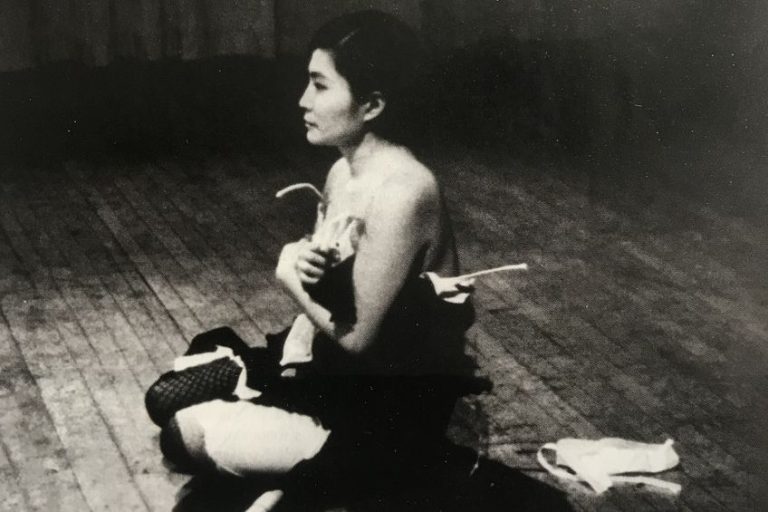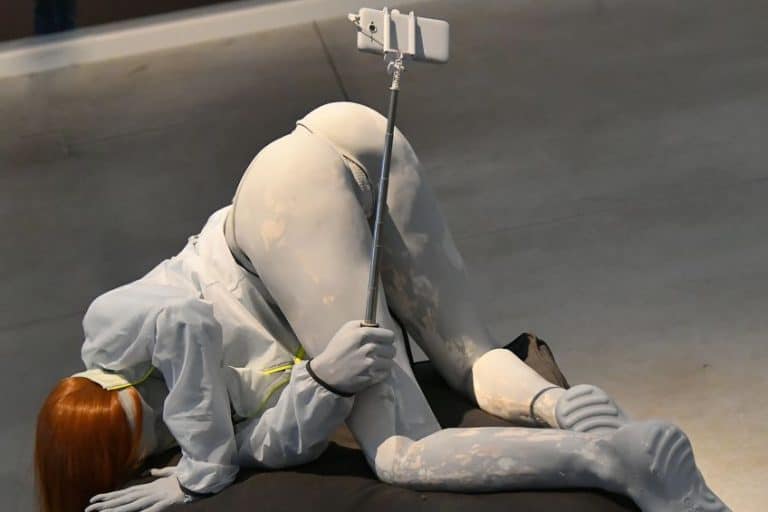Michelangelo Facts – 12 Things to Know About Michelangelo
Michelangelo Buonarroti was a highly regarded sculptor, architect, and artist, and is often cited as having exerted the most influence over Western art more than any other artist. He is also considered by many as an exemplary figure of the Renaissance era. But was Michelangelo married? How did Michelangelo die? How old was Michelangelo when he became famous? Yes, these basic Michelangelo facts will be answered, however, our focus will be on the more interesting facts about Michelangelo that you might not have heard about already, so let us dive in.
An Introduction to Michelangelo Buonarroti
Most historians agree that Michelangelo is not only revered as the most influential artistic figure of his period, but many would argue that his influence has permeated through every period since his own. Even someone who has not studied any art or history previously would instantly recognize many of his paintings, sculptures, or architectural structures. Works like his David (1501) statue and The Creation of Adam (1512) fresco continue to astound and amaze us more than 500 years after their creation.

Michelangelo Buonarroti was born in Florence, Italy in 1475. Even though he considered himself more of a sculptor, his fresco work in the Sistine Chapel is most likely his most famous artwork. He started his artistic career at the age of 13, apprenticing for Domenico Ghirlandaio for what was meant to be three years, although he left after just one year because he felt he had nothing left to learn.
Interesting Facts about Michelangelo
You might be asking yourself “Was Michelangelo married?” or “Who did Michelangelo marry?”. While much is known about this man’s life, we know very little about the most personal aspects. Michelangelo never married but was said to have written many of his poems for the widow, Vittoria Colonna. He was one of the most written about and studied men of his time, being the first to have a biography written about him while he was still alive. Historians have uncovered loads of interesting facts about Michelangelo, and today we will take a look at a few of them.
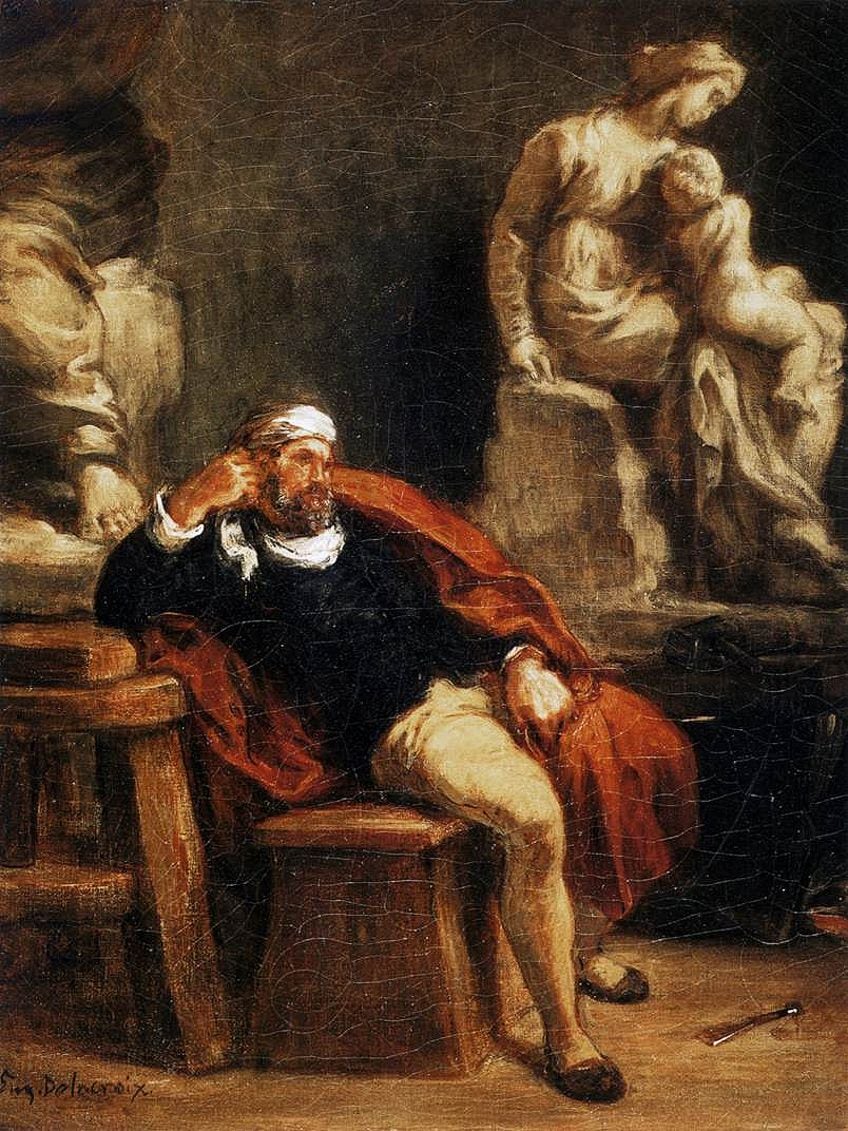
His Nose Was Broken by a Rival Artist
When Michelangelo was a teenager, he was sent to study with Lorenzo de’ Medici, a very respected art patron in Europe. He was disliked by his fellow pupils due to his talents and sharp wit, and once got punched by a student named Pietro Torrigiano so hard that it was left permanently damaged.
Torrigiano was said to have found the crunching sound of broken cartilage highly satisfying and remarked that Michelangelo would have to carry his mark to the grave.
He Was First Noticed Due to Attempted Fraud
During the early days of Michelangelo’s career, he carved a Greek-style cupid statue. When de’ Medici saw it, he suggested that Michelangelo make it look like it had been long buried under the sand. Medici would then sell it as an antique that had been dug up, substantially increasing the sale value. Michelangelo agreed to go along with the fraudulent sale of the statue and it was bought by Cardinal Raffaele Riario.
The Cardinal had been told that it was an archeological wonder that had recently been discovered.
Riario would eventually get his money back after hearing of the fraudulent nature of the sale, yet was so impressed that he invited Michelangelo for a meeting in Rome. It was in Rome that he would eventually create the sculpture that would lead to his rise in fame, the Pietà (1498).
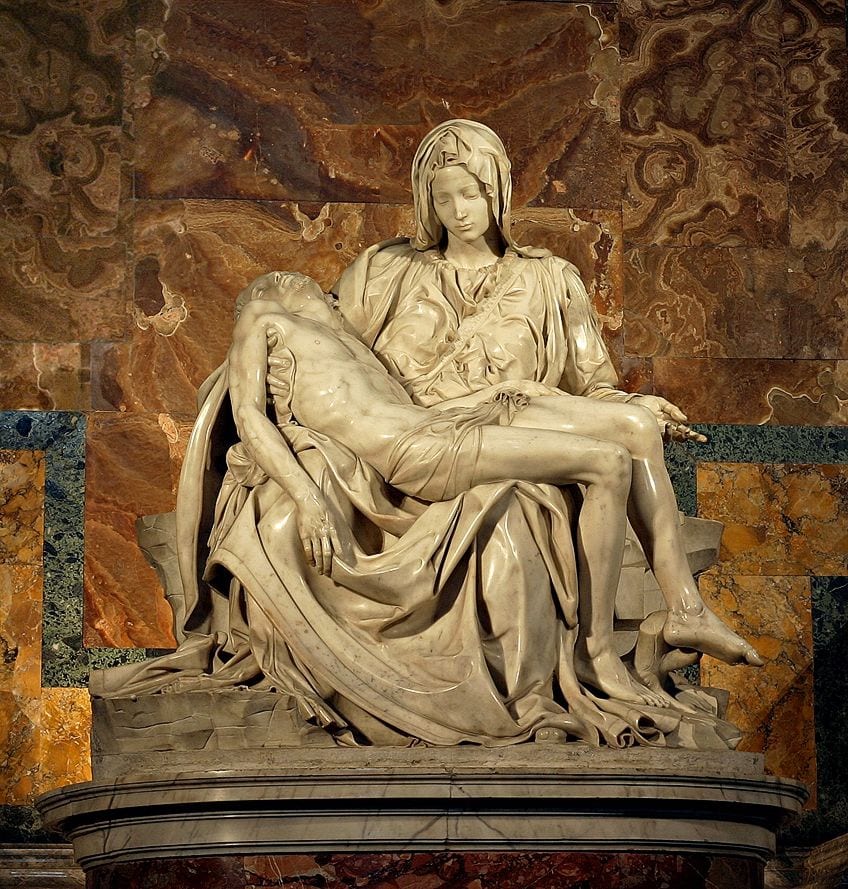
A Block of Discarded Marble Was Used to Carve David
It was said that Michelangelo was very demanding about the quality of marble that he used for his sculptures. Yet surprisingly, he used a block of marble that had been considered unworkable by other sculptors to make his famous statue, David. The slab was known as “the Giant” and was part of an abandoned attempt to quarry marble for sculptures for the Florence Cathedral.
It had sat in the quarry for over 40 years before Michelangelo started working on it in 1501.
By that time, the marble was rough and deteriorating, scarred by the previous futile attempts by other sculptors to bore into the marble with their chisels. Despite eventually being turned into the masterpiece we know today, it has deteriorated more than most other sculptures of the period due to the marble’s poor quality.

He Created Art for Nine Different Popes
Michelangelo created artworks for nine Catholic Popes consecutively, from Julius II to Pius IV, starting in 1505. During that time, his work was large in scope, ranging from ornamental knob crafting for the Pope’s bed to the four-year-long process of painting the Sistine Chapel.
He did not always have cordial relationships with all of them, however, such as his relationship with Pope Julius II, for whom Michelangelo had worked three years. The artist had been sculpting a facade for Pope Leo X before Julius II suddenly pulled the plug on the project. He did enjoy better relationships with other pontiffs though, such as Pope Paul III, who stood up for his work on The Last Judgment (1536) after it was deemed obscene by officials of the church for the presence of naked figures.

Michelangelo Helped Design Military Defense Fortifications
In 1527, the Medici family was expelled by the people of Florence, and a republican government was installed. Although he was previously employed by the Medicis, Michelangelo agreed with the cause of the republicans and soon took charge of the fortification of the city as the newly appointed director.
This was not a job he took lightly, traveling around towns to observe and analyze their own defense walls.
He made numerous sketches and plans for lookout bastions and wall designs. These designs would help protect the city from a ten-month onslaught from the invading forces until finally succumbing to the siege in August of 1530. He was luckily not executed and was promptly forgiven and re-hired by Clement VII. When the pope died in 1534, he fled Rome for good.
His Likeness Can Often Be Seen in His Art
Michelangelo never created any formal self-portraits, nor did he sign his work. However, he did often insert himself into scenes by adding stylized versions of himself into his sculptures and paintings. A well-known example of this can be seen in The Last Judgment, where he has used his own image in the depiction of St. Bartholomew. He also depicted himself secretly as Saint Nicodemus in the Florentine Pietà (1547), as well as in a crowd in The Crucifixion of St. Peter (1546).
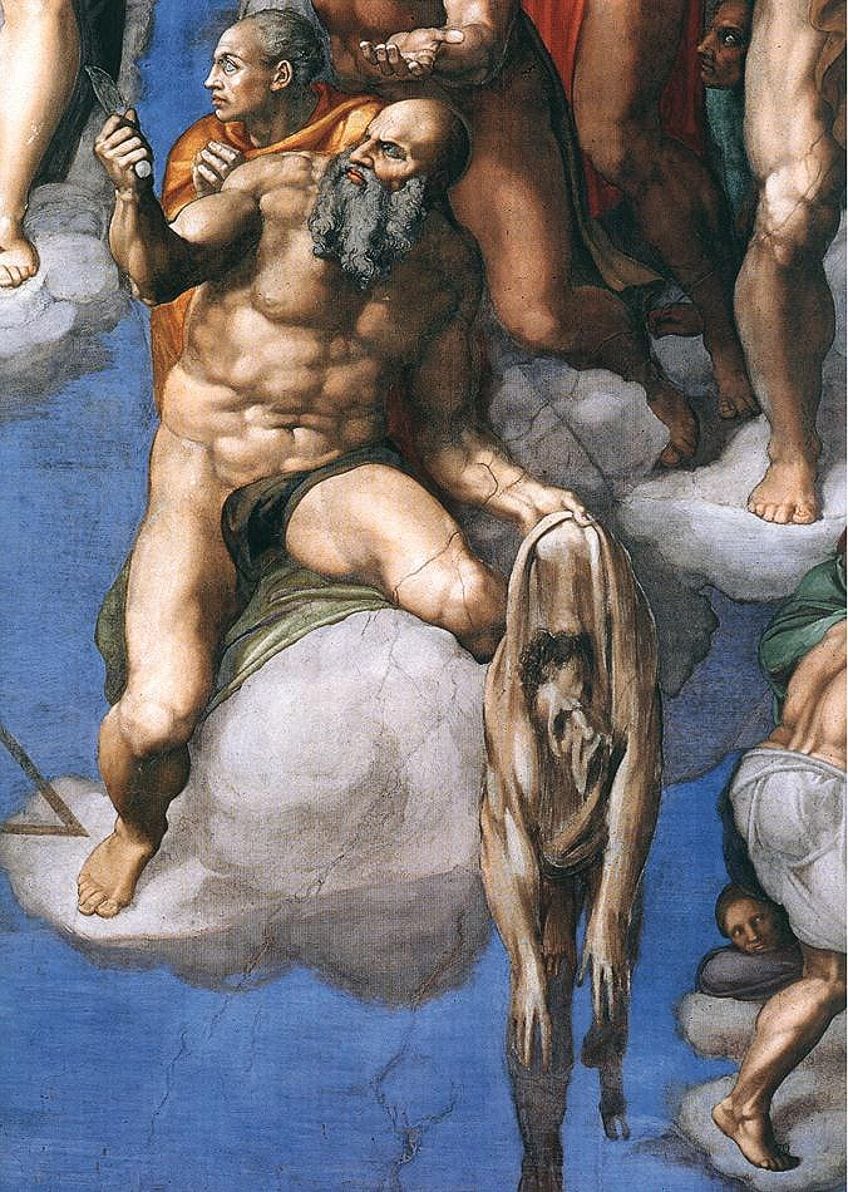
Michelangelo Was Also a Poet
Although he is most well-known for his visual artwork, Michelangelo was a multi-talented individual who was also respected in his day for his sonnets. He was said to have produced hundreds of madrigals and sonnets during his career, often putting down his chisel while at work on a piece to write down a line or two of verse. He wrote on many subjects, from aging to sex, and even his bladder.
Although his written works were not published while he was alive, they were widely circulated in 16th century Rome and were even set to music by some of the composers of the period.
He Worked Until the Final Week of His Life
Most of Michelangelo’s last years were spent in the Vatican as overseer of the ongoing construction at St. Peter’s Basilica. Michelangelo still sent designs and drawings from home when he grew too weak to be on-site anymore. Yet, even at home, he continued to work on his sculpture until the very end. He was working on the Rondanini Pietà (1552) when he died at the age of 88.

His Most Famous Works Have Been Vandalized
In 1972, Laszlo Toth, a geologist suffering from mental instabilities, jumped over the railing at St Peter’s Basilica and hammered away at the Pietà sculpture. He broke off parts of Madonna’s forearm, nose, veil, and eyelid. Restoration workers had to recover many pieces of marble that were broken off in the attack, including a piece that was eventually sent by mail to the Vatican by a tourist who had pocketed it during the unfolding of the dramatic attack. It would take 10 months to repair the sculpture before it was put back on display again.
The same thing happened to the “David” sculpture in 1991, when an attacker hammered off a toe with a chisel.
He Used His Art to Enact Vengeance
While Michelangelo Buonarroti was busy working on The Last Judgment, he was visited by Pope Paul III who was accompanied by an entourage, including Biagio de Cesena, the Master of Ceremonies. Biagio expressed great disgust at the number of naked figures in the paintings, stating that they didn’t deserve to be displayed anywhere better than the walls of a bar. In response, Michelangelo depicted Biagio as Minos, judge of the souls, in hell, surrounded by serpents that were trying to bite at his genitals.
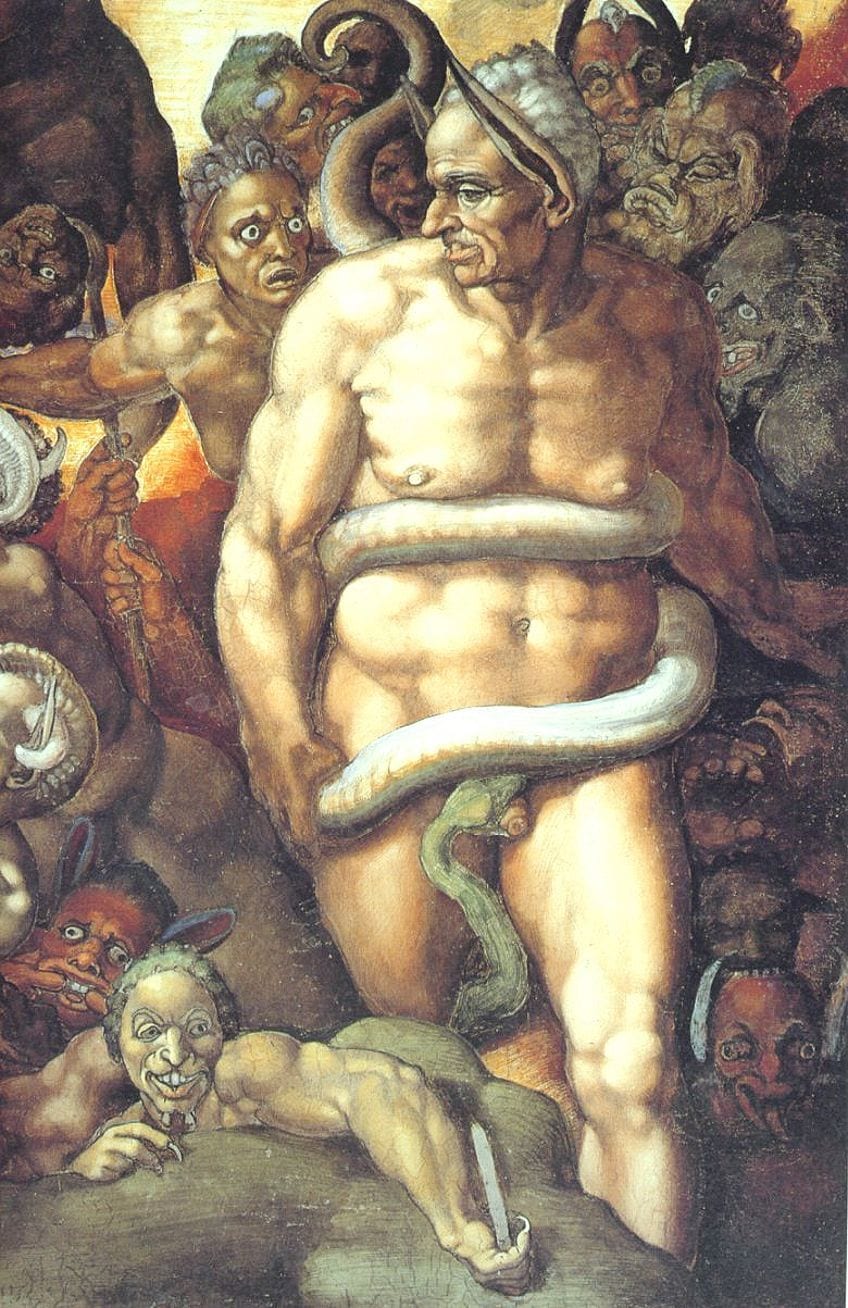
He Was Relatively Wealthy
Many artists fall into the archetype of being a struggling creative person that dies penniless. However, this was not the case with Michelangelo, who was considered among the wealthiest artists of his time. His work for well-off patrons such as Pope Julius II ensured a steady supply of work and income. He was also a strategic investor and was successful with his investments in property.
His Work at the Sistine Chapel Was Meant to Sabotage His Career
Michelangelo was always considered more of a sculptor than a painter. Other painters such as Raphael were quite envious of his abilities and persuaded Pope Julius II to commission Michelangelo to paint the chapel in the hope that he would fail and that his career would be ended. At first, Michelangelo turned down the offer, but eventually agreed to do it and spent four years painting from scaffolding, thereby creating one of the most celebrated works of art in history.
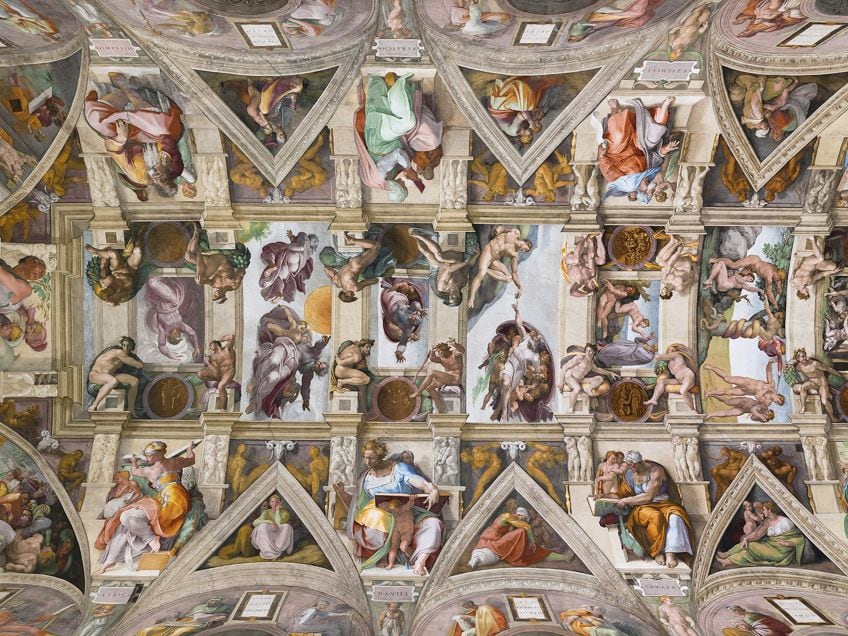
Some More Michelangelo Fun Facts
Michelangelo sure did live an interesting life! Historians have done a great job of preserving his life and work, making it difficult to fit everything he did into one article! Let us look at some more Michelangelo fun facts.
- It took him four years to complete his work on the Sistine Chapel. Although many people believe he lay down while painting, in reality, he painted over his head.
- Despite being one of the wealthiest artists of his time, he lived like a hermit and very rarely made contact with other people except for work.
- Michelangelo Buonarroti did not want other people to know how much effort his work took to create and destroyed most of his sketches towards the end of his life.
- He was known to have written many letters, out of which around 490 still survive today, all containing his signature.
- When he passed away in 1564 in Rome, his body was sent to Florence as per his secret wishes.
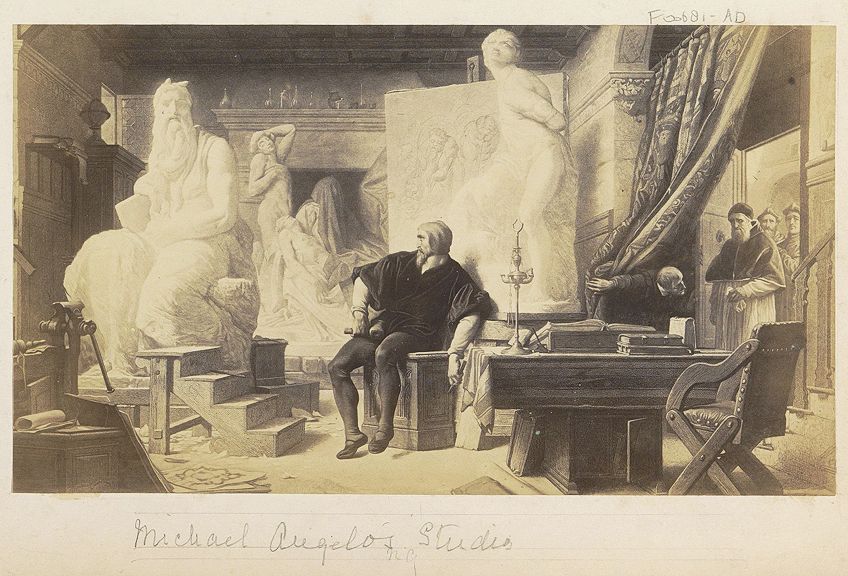
Today we have covered everything from Michelangelo fun facts to the more serious and interesting facts about Michelangelo Buonarroti. The life of this famous artist and sculptor lives on through the books and sites about fascinating Michelangelo facts.
Frequently Asked Questions
Was Michelangelo Married and Who Did Michelangelo Marry?
Michelangelo never married anyone and was often described as having the chastity of a monk. It is not possible for us to know whether his relationships were ever physical, but it was rumored that he had been involved with fellow poet Vittoria Colonna. He did, however, write many poems with undertones of love and sexuality.
How Did Michelangelo Die?
Michelangelo continued his work right up until his death. Even when he was too sick to go to sites he continued to work from his studio. He passed away after a short illness in 1564.
How Old Was Michelangelo When He Was First Noticed?
Michelangelo was still only a teenager when he created a cupid statue. His patron convinced him to pretend that the statue was older than it really was and tried to sell it as an antique. Although the person they sold it to eventually found out about their scam, they were impressed enough to call for a meeting with the young Michelangelo.
Isabella studied at the University of Cape Town in South Africa and graduated with a Bachelor of Arts majoring in English Literature & Language and Psychology. Throughout her undergraduate years, she took Art History as an additional subject and absolutely loved it. Building on from her art history knowledge that began in high school, art has always been a particular area of fascination for her. From learning about artworks previously unknown to her, or sharpening her existing understanding of specific works, the ability to continue learning within this interesting sphere excites her greatly.
Her focal points of interest in art history encompass profiling specific artists and art movements, as it is these areas where she is able to really dig deep into the rich narrative of the art world. Additionally, she particularly enjoys exploring the different artistic styles of the 20th century, as well as the important impact that female artists have had on the development of art history.
Learn more about Isabella Meyer and the Art in Context Team.
Cite this Article
Isabella, Meyer, “Michelangelo Facts – 12 Things to Know About Michelangelo.” Art in Context. August 31, 2021. URL: https://artincontext.org/michelangelo-facts/
Meyer, I. (2021, 31 August). Michelangelo Facts – 12 Things to Know About Michelangelo. Art in Context. https://artincontext.org/michelangelo-facts/
Meyer, Isabella. “Michelangelo Facts – 12 Things to Know About Michelangelo.” Art in Context, August 31, 2021. https://artincontext.org/michelangelo-facts/.





